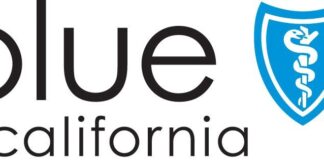NEW YORK, Nov. 17, 2015 /PRNewswire-HISPANIC PR WIRE/ — In a new study published by the medical journal Diabetes involving more than 11,000 subjects, the GlycoMark® test was used to help define links between hyperglycemic excursions and increased incidence of cardiovascular disease and death1.
The recently published study involved analysis from the Atherosclerosis Risk In Communities (ARIC) Study. The ARIC Study is a community-based prospective cohort of over 15,000 participants sampled from four U.S. communities. The study was initiated in 1987 and is ongoing, with participants returning for routine follow-up visits. GlycoMark provided study support through the donation of assays to measure 1,5-AG.
“The results from this important study underscore the importance of identifying and controlling hyperglycemic excursions, which is consistent with the goal of diabetes treatment,” said Larry Thomas, President of GlycoMark, Inc. “To control hyperglycemic excursions, one must first identify them. The GlycoMark test is an important but underutilized tool to help physicians detect hyperglycemic excursions that are not reflected by traditional markers of glycemic control such as HbA1c. Accordingly, we view the GlycoMark test as providing more information to help optimize the management of diabetes.”
The article reports that almost half (49%) of study subjects with diabetes had 1,5-AG levels less than 6 mcg/mL, consistent with recent high glucose peaks averaging more than 200 mg/dL, and only 38% had 1,5-AG levels above 10 mcg/mL, widely considered to be normal levels reflecting the absence of significant, recent hyperglycemia.
Further, and consistent with previous studies associating hyperglycemic excursions with microvascular complications of diabetes, such as retinopathy and nephropathy2, the study demonstrated an association between hyperglycemic excursions and the occurrence of coronary heart disease, ischemic stroke, heart failure, and all-cause mortality. Importantly, though attenuated, the association between hyperglycemic excursions and adverse outcomes remained significant even after adjustment for the traditional markers of glycemic control, HbA1c and fasting glucose.
The GlycoMark test is not intended to detect any specific disease, including coronary heart disease, ischemic stroke, heart failure, nor is intended to predict death. It is cleared by the FDA to provide quantitative measurement of 1,5-anhydroglucitol (1,5-AG) in serum or plasma. The GlycoMark test is for professional use, and is indicated for the intermediate term monitoring of glycemic control in people with diabetes. The GlycoMark test is a non-fasting laboratory test ordered and used by physicians for the management of patients with diabetes.
1Selvin E, Rawlings A, Lutsey P, et al. Association of 1,5-anhydroglucitol with cardiovascular disease and mortality. Diabetes. 2015 Sep 22. pii: db150607. [Epub ahead of print]
2Selvin E, Rawlings AM, Grams M, et al. Association of 1,5-anhydroglucitol with diabetes and microvascular conditions. Clin Chem. 2014 Nov;60(11):1409-18.






